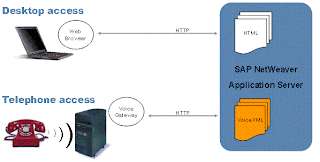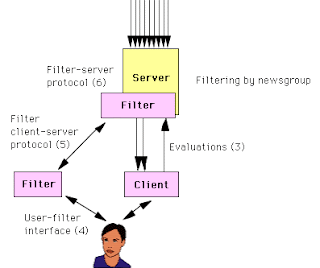A security technology that is commonly used to secure server to browser transactions.
Saturday, February 26, 2011
Webapp
An application that is accessed via a web browser over a network such as the Internet or an intranet.
Web Cache
The caching of web documents (HTML pages, images) to reduce bandwidth usage, server load, and perceived lag.
Web 2.0
Web applications that facilitate interactive information sharing, interoperability, user-centered design, and collaboration on the World Wide Web.
Social Networking Site
Any of several websites that provide a virtual community in which people with a shared interest may communicate.
Podcast
Distribute (multimedia files) over the internet for playback on a mobile device or a personal computer.
Internet Protocol (IP) Address
A usually numerical label assigned to each device (computer, printer) participating in a computer network.
Hit
The ratio of the number of records found and processed during a particular processing run, to the total number of records available.
Digital Certificate
A data file that is issued by a Certification Authority to an individual or organisation to identify them to online services.
Cookie
A short line of text that a web site puts on your computer's hard drive when you access the web site.
ActiveX
Software components from Microsoft. They enable sound, Java applets and animations to be integrated in a Web page.
Saturday, February 19, 2011
Worm
A software program capable of reproducing itself that can spread from one computer to the next over a network.
Time Bomb
A computer program that has been written so that it will stop functioning after a predetermined date or time is reached.
Teleconferencing
A generic term which applies to a variety of technologies and applications, including audio, data and videoconferencing, as well as business TV and distance learning.
Tagging
A non-hierarchical keyword or term assigned to a piece of information (such as an internet bookmark, digital image, or computer file).
RDF Summary
An XML format used to syndicate news, blog posts, forum threads, and other content among different web sites.
Pyramid Schemes
A non-sustainable business model that involves the exchange of money primarily for enrolling other people into the scheme.
Phishing
Deception designed to steal your valuable personal data, such as credit card numbers, passwords, account data, or other information.
Logic Bomb
A piece of code intentionally inserted into a software system that will set off a malicious function when specified conditions are met.
User Agent
A client application implementing a network protocol used in communications within a client-server distributed computing system.
Signature
A digital code that can be attached to an electronically transmitted message that uniquely identifies the sender.
Subscribe to:
Comments (Atom)
















































